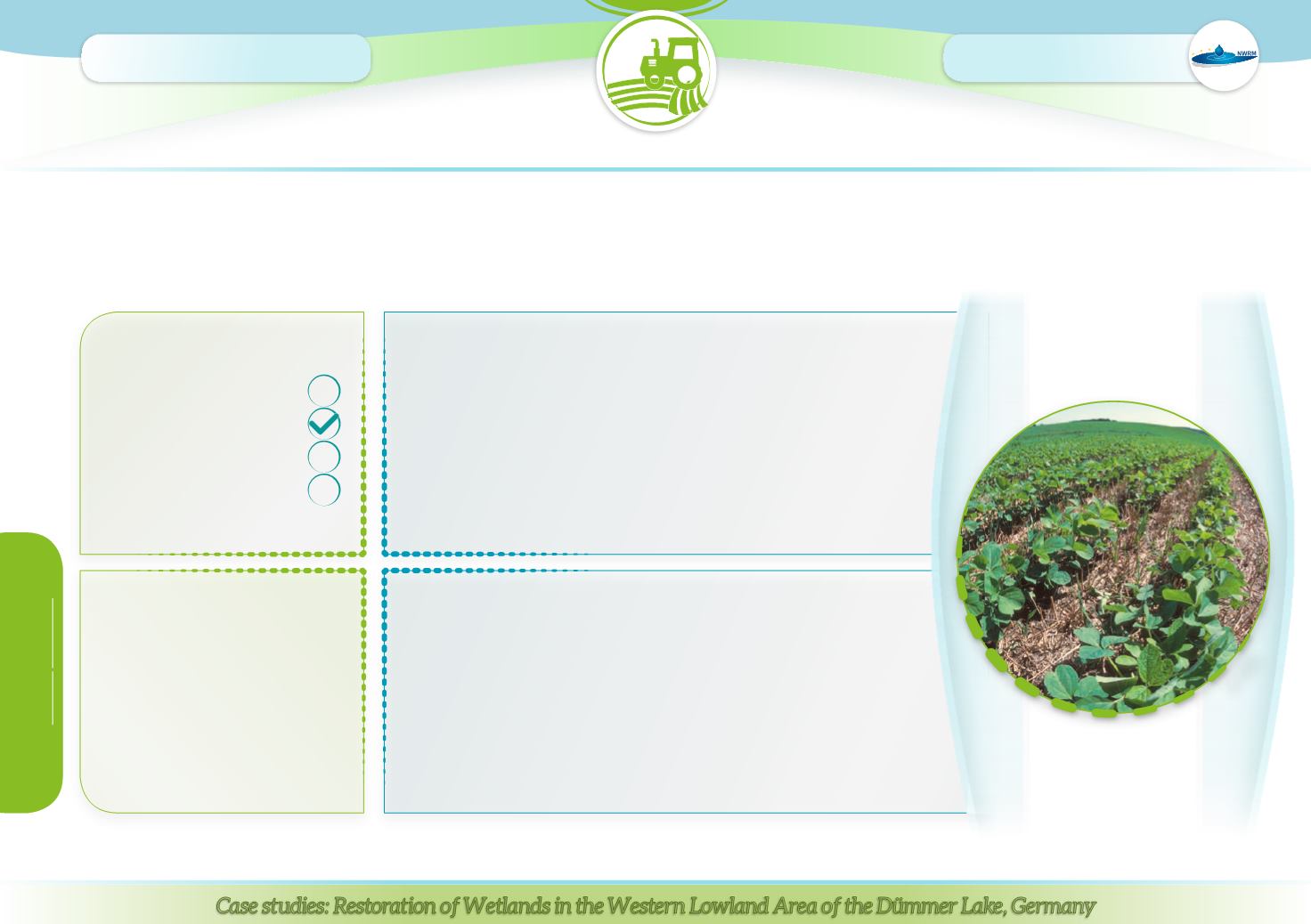
Project funded
by theEU–DGEnvironment
L
and
surfacerelevant
forapplication
Artificial surface
Agriculture land
Forest and semi-natural areas
Wetlands
F
inancialcosts
(C
apital
,
operation
&
maintenance
)
Low-till systems require special machinery for practices such as sowing, discing and
harrowing. Contractor charges (capital and labour) range between 32 and 67€/ha.
Different practices require different labour inputs, ranged between €23 to 254/ha.
D
esign
Low-till can be
combinedwith other agricultural measures
such as green
cover/cover crops, mulching, controlled traffic farming. Controlled traffic farming
is especially relevant as it can help to avoid problems of soil compaction due to
machinery movements, particularly on the wetter soils typical of northern Europe.
However, the presence of crop or mulch residues may reduce the effectiveness of
reduced tillage for water infiltration.
S
cale
Low-till agriculture is applicable at field
scale.
Low-till agriculture, also known as conservation or reduced till, leaves at least 30% of
crop residue
on the soil surface, during the critical soil erosion period.
This slows water movement, which reduces the amount of soil erosion and potentially leads to greater infiltration.
Casestudies:RestorationofWetlands in theWesternLowlandAreaof theDümmerLake,Germany
AGRICULTURE
©
U
S
D
A


